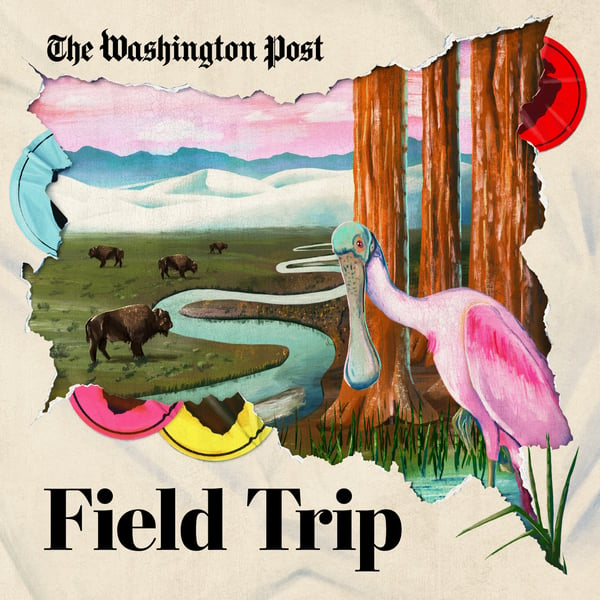White Sands National Park
Field Trip
The Washington Post
4.6 • 976 Ratings
🗓️ 12 July 2023
⏱️ 60 minutes
🧾️ Download transcript
Summary
White Sands National Park contains a geological rarity: the largest field of gypsum sand dunes anywhere on earth. The blinding white dunes stretch for miles in every direction, dazzling tourists, inviting selfies and sled rides.
But there’s much more to this park than meets the eye. White Sands National Park, one of the newest in the system, is embedded within White Sands Missile Range, the largest military installation in the country. Today the missile range is a testing ground for cutting-edge weapons. It’s also home to the Trinity site, where the first test of an atomic bomb was conducted in 1945. In that instant, the sand beneath the bomb fused into greenish glass. And life changed forever for people living in communities nearby.
That same sand also holds evidence of humanity’s origins on this continent. One observant park ranger at White Sands National Park has spent years uncovering footprints delicately preserved in the shifting sand. Those tracks have painted a picture of prehistoric families living alongside mammoths and giant ground sloths. They’ve also raised new questions about just how long ago the first people might have crossed into North America.
In this episode of “Field Trip,” Washington post reporter Lillian Cunningham visits these two very different sites in the New Mexico desert and asks why this landscape has been both safeguarded and sacrificed.
We have incredible photos for this series. You can see them and find more on the National Parks here.
“Field Trip” would not have been possible without the support of Washington Post subscribers. If you’re not yet a subscriber, you can unlock a special deal as a listener to this series. Your first four weeks are free when you sign up here.
Transcript
Click on a timestamp to play from that location
| 0:00.0 | You're going to be. The Sand in White Sands National Park in Southern New Mexico is different. |
| 0:24.0 | It truly is bright white, like snow or sugar. |
| 0:30.0 | And weirdly, it's cool to the touch. It doesn't absorb heat, it just reflects it back. |
| 0:37.0 | So the dunes around me are blinding, even though it's late in the day. |
| 0:42.0 | I'm hiking along in an Indiana... even though it's late in the day. |
| 0:47.0 | I'm hiking along in an Indiana Jones style hat, a windbreaker, sunscreen on every bit of exposed skin. |
| 0:50.0 | We're not far in and my boots are already full of sand. |
| 0:55.0 | Overhead, there's an occasional sound of fighter jets. |
| 0:59.0 | It's a reminder of what lies just a few miles away. |
| 1:04.0 | And we'll get to that, but right now, I am just taking in the view. This landscape feels like another |
| 1:18.9 | planet. Everywhere I look, there's nothing but sky and sand dunes rise and fall in sweeping curves like waves of a strange ocean. |
| 1:37.0 | From here you can see the highest dune in the park. |
| 1:47.0 | Oh that one kind of jet-hings. |
| 1:48.0 | Yeah, that one right there. |
| 1:50.0 | It's just a perfect place to go for sunset. |
| 1:55.5 | I'm out here this evening with Wayne Suggs. |
| 1:57.9 | He's a photographer who grew up nearby. |
| 2:00.8 | I saw his night images of white sands before I came here and they're incredible, so I asked if I could come out here with him. |
| 2:08.0 | Wayne's taking me to his favorite spot in the park to photograph the sunset and we have to climb up and |
| 2:15.0 | over all these smaller dunes to reach it. |
| 2:20.4 | You can see the shadow starting to get longer. |
| 2:24.0 | Yeah. |
... |
Please login to see the full transcript.
Disclaimer: The podcast and artwork embedded on this page are from The Washington Post, and are the property of its owner and not affiliated with or endorsed by Tapesearch.
Generated transcripts are the property of The Washington Post and are distributed freely under the Fair Use doctrine. Transcripts generated by Tapesearch are not guaranteed to be accurate.
Copyright © Tapesearch 2025.

